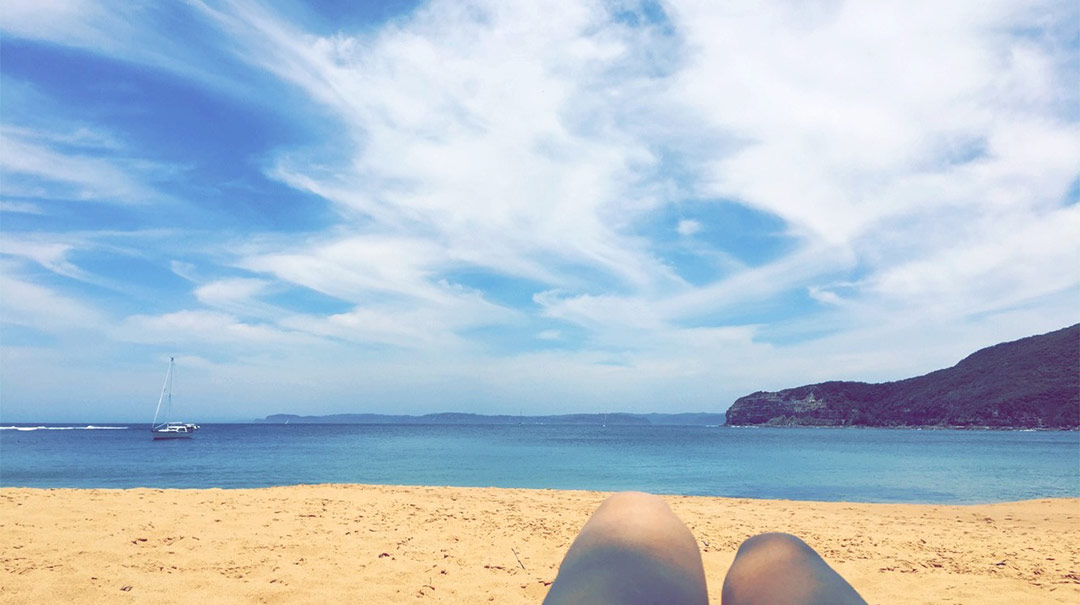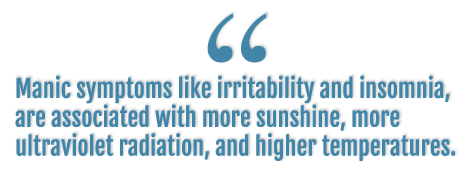Summertime sadness – Reverse Seasonal Affective Disorder

The cold, wintery days are long behind us as we welcome the blistering summer that we Australians know and love. The onset of spring and summer typically brings joy and excitement. The cold and gloomy days of winter are over, so we head outdoors to enjoy the weather.
We can now say goodbye to the ‘winter blues’ as the temperature and sunlight steadily increase and bring us into the hot Australian summer. However, it may also be possible for the onset of summer to lead to depression. Referred to as reverse SAD, it refers to recurring episodes of depression during the warmer periods of the year, like spring and summer.
Seasonal Affective Disorder (SAD) is a subtype of depression following the seasons of the year. About 4-6% of people experience seasonal depression, reporting a range of symptoms, like mood fluctuations, lethargy, withdrawal from social interaction, and feelings of hopelessness. SAD is characterised by a seasonal pattern of recurring depressive episodes typically experienced during the winter and remitting in spring/summer.
The exact cause behind SAD is currently unknown, but there are many hypotheses offering an explanation. The most prominent explanation for SAD is a variation in light exposure. Our biological clock relies on the rhythmic changes in light between day and night. Called the circadian rhythm, it continuously cycles through phases of sleepiness and consciousness on a 24-hour basis. During winter, people are subject to less environmental light exposure, since the days are shorter. The longer winter nights cause a mismatch between our circadian rhythm and the natural day-night cycle, leading to a disruption in our biological clock. This causes disturbances in sleep, appetite, and social interaction, which all can have a flow on effect on one’s health and wellbeing.
The winter blues should start to gradually dissipate as the summer wears on. But for some, the increase in temperature leads to changes in mood. Winter SAD may reflect typical symptoms of depression, but reverse SAD is uniquely characterised by symptoms like insomnia, anxiety, agitation, weight loss, and decreased appetite. Where winter SAD can be attributable to a decrease in light exposure, reverse SAD could be due to an over-exposure of light. It may be counter-intuitive to think that an increase sun exposure and temperature can lead to symptoms of depression, but the cluster of symptoms reported can be attributable to a hotter climate. Manic symptoms like irritability and insomnia, are associated with more sunshine, more ultraviolet radiation, and higher temperatures. With the Australian summer getting progressively hotter, where since 2013 the mean temperature has been on average 0.95⁰C higher than the 1961-1990 average, the likelihood and severity of a seasonal pattern of depression during spring and summer may increase.
There may be other stressors leading to reverse SAD. Moving into spring and summer may pose an increased demand to socialise and go out, whereas some people may feel happier and more comfortable staying in during the cold, wintery days. Furthermore, people may also be affected by confidence issues with their body image, which is exacerbated during spring and summer as we head outdoors more often. There is a social expectation that we should enjoy the warmer days of spring and summer and this may place added societal pressure for people to follow these expectations, rather than do what makes them happy.
Although reverse SAD is the lesser known of the two, it shouldn’t be disregarded as a legitimate issue. The generalisation that the warmer weather should only make us happier should be reconsidered, as the summer may also lead to the onset of seasonal depression. If you’re finding yourself dreading the hot and sticky Australian summer, or if you feel like the heat is making you feel uncomfortable and agitated, don’t be afraid to see your GP to see what you can do.
By Johnny Wang
Back to most recent edition
Newsletter
Stay up to date
Sign up to our Mind Reader newsletter for monthly mental health news, information and updates.
